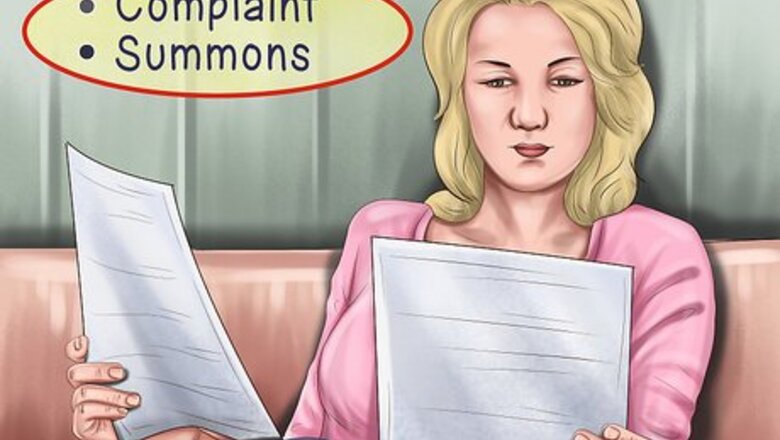
views
Answering the Complaint
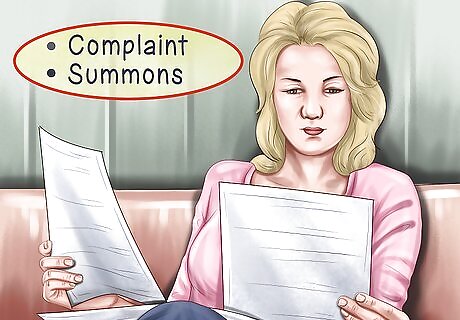
Read the complaint and summons. When you are served, you must read the legal documents so you know who is suing you and why, where the case will be heard, and how long you have to respond to the lawsuit. Your deadline to respond to the complaint typically starts with the date you were served with the lawsuit. Check the summons to calculate the deadline and mark it on your calendar. If you're confused about how long you have to file your answer, call the clerk's office of the court where the plaintiff filed his or her lawsuit and someone will assist you. The complaint provides details about the allegations against you and why the plaintiff believes he or she is legally entitled to compensation from you. Review these facts carefully, because in your answer you will have to state whether you admit or deny them.

Assess whether basic reasons to dismiss the lawsuit apply to your situation. When you file your answer, there are several key defenses that you must assert or they will be considered to be waived and you won't be able to mention them later. It's important to evaluate these issues so you don't lose a relatively easy way to have the lawsuit dismissed. Look at the name of the court where the plaintiff filed his or her lawsuit and figure out where it's located. If it's far away from you, that court may not have jurisdiction over you. However, you still have to file a response to the lawsuit stating the case should be dismissed for lack of jurisdiction. If you don't bring up personal jurisdiction in the first document you file with the court, it's treated as though you've agreed that the court has jurisdiction over the case, so assess this matter carefully. Keep in mind that if the case is dismissed for lack of personal jurisdiction, the plaintiff typically has the ability to refile the lawsuit in a different court that does have jurisdiction. However, the dismissal will at least buy you a little time. You also should check your state's statute of limitations for personal injury lawsuits. The statute of limitations provides a deadline after which people do not have the legal right to file a lawsuit for damages due to injuries. This deadline can vary from one to six years after the date of the incident that caused the plaintiff's injuries, depending on the state. If the applicable deadline has passed, however, you can ask the court to dismiss the plaintiff's lawsuit.
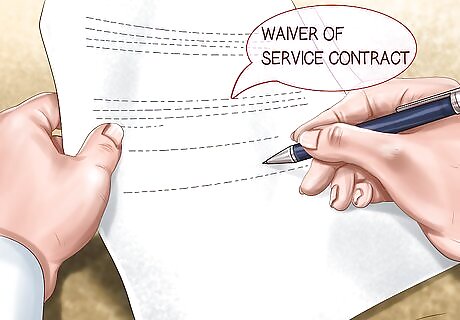
Gather information. Before you respond to the lawsuit, you should take a little time to get together any documents or information you may have about the incident that gave rise to the plaintiff's claim, as well as your relationship to the plaintiff and the incident that caused his or her injuries. For example, if you run a community sports organization, and the plaintiff is a player on one of your teams, he or she probably signed a form releasing you from liability for any injuries he or she sustains while playing sports. Schools typically require athletes to sign similar waivers. If the plaintiff signed a waiver releasing you for liability, that form can serve as a defense that you cannot be held liable for the plaintiff's injuries. However, if the plaintiff signed a waiver you should expect that he or she knows this and is claiming the incident isn't covered by the waiver. For example, intentional acts to maliciously injure the plaintiff cannot be disclaimed. At the same time, if another player intentionally injured the plaintiff, that player should be sued – not the athletic organization or association that sponsored the event. Even if you're a player on an opposing team who injured the plaintiff during a game, you generally are shielded unless the plaintiff can prove that you maliciously set out to hurt him or her. This level intent goes beyond aggressive play. If you have a liability insurance policy that might cover the plaintiff's injuries, you should consider filing a claim and letting your insurance company take care of it.

Check for forms or templates. If the plaintiff sued you in small claims court, there typically will be a form for you to fill out to respond to the lawsuit. In other civil courts, there may not be a form, in which case you'll have to draft your answer yourself. There may be a form included with the lawsuit paperwork. If not, you can check the court's website or call the clerk's office. Keep in mind that even if you've determined the plaintiff filed his or her lawsuit in the wrong court, you still must answer the lawsuit in that court. If you can't find a specific form, but you've decided to draft your answer yourself, you may want to go to the clerk's office and ask for a sample answer filed in another case in that same court that you can use as a guide.
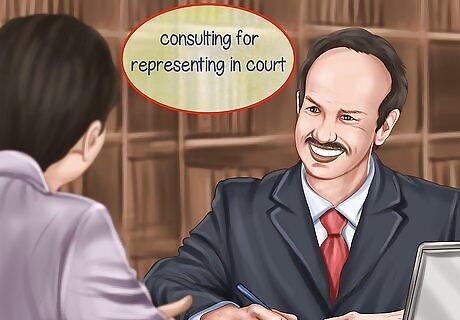
Consider consulting an attorney. If the lawsuit was filed in a regular civil court rather than in small claims, you might benefit from an attorney's assistance. Keep in mind that civil defense attorneys typically charge by the hour, and legal expenses can add up. If you can't afford attorney's fees, you may want to look into unbundled services, which allow you to use an attorney for specific tasks without paying that attorney to represent you in the case as a whole. With unbundled services, you typically pay the attorney a flat fee to complete specific tasks, such as drafting your answer or motion to dismiss. However, that attorney does not represent you, and any communications from the plaintiff regarding the case are handled by you.
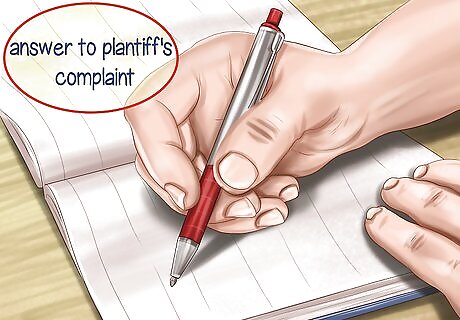
Draft your answer. Before the deadline listed in the summons, you must file a written answer to the plaintiff's complaint. Through your answer, you can deny the plaintiff's allegations as well as assert any defenses that apply based on your situation. The primary function of your answer is to respond to the allegations and tell the court whether you admit, deny, or lack sufficient information either to admit or deny each one. No fancy legal language is necessary here, you can simply write "deny" or "admit." If you don't know enough about a particular allegation, you also can respond "Defendant lacks sufficient information to either admit or deny the allegation." The court treats this the same as a denial. When you deny an allegation, you aren't saying it isn't true. Keep in mind that the plaintiff bears the burden of proof in a civil case. When you deny an allegation, you are forcing the plaintiff to carry his or her burden of proof. When you admit an allegation, this takes that particular issue out of the trial, in the sense that the plaintiff no longer has to prove it. Be very careful when responding that you admit an allegation. After you respond to the allegations, you have the opportunity to list any defenses that you have against the lawsuit as a whole. These defenses can be drawn from the research you did or advice you received from an attorney. For example, if the statute of limitations has passed, you have a defense that the plaintiff has no right to file the lawsuit because the statute of limitations has expired.
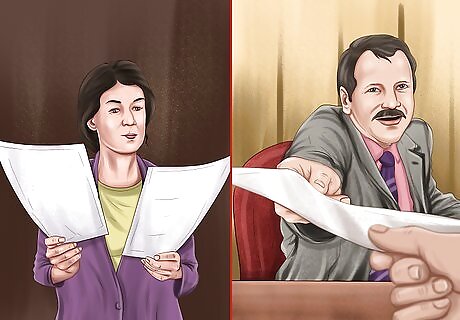
File your answer. You must take your answer and any other required documents to the clerk of the court where the plaintiff filed his or her lawsuit before the deadline listed on the summons if you want to defend yourself. When you've completed your answer, sign it and make at least two copies to take with you to the clerk's office. You'll want the clerk to file-stamp one copy for your own records and one copy to deliver to the plaintiff. The clerk will keep your original and give the copies back to you. Some courts charge a filing fee for answers, while others don't. You may want to call the clerk's office before you go to find out if you'll be charged a filing fee, how much it will be, and what forms of payment are accepted. If the court charges a filing fee and you can't afford it, you may be eligible for a fee waiver. Ask the clerk for an application. You'll have to disclose information about your income and assets, and if your available funds fall below the state's threshold you won't have to pay any filing fees.
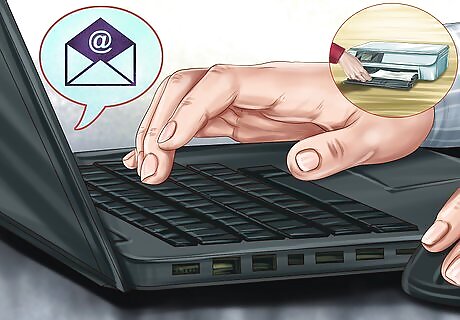
Have the plaintiff served. After you've filed your answer, you must arrange for it to be delivered to the plaintiff according to the court's rules for legal service of process. These rules ensure you have legal proof that the documents were received by the plaintiff. You typically have a choice of either having the answer hand-delivered to the plaintiff by a sheriff's deputy or private process serving company, or mailing it using certified mail with returned receipt requested. If you serve your answer using certified mail, keep your receipt. You must use it to complete a proof of service form which must be filed with the court.
Filing a Motion for Summary Judgment

Research assumption of the risk. Your primary defense against sports injury is that the plaintiff assumed the risk of injury by voluntarily participating in sports. If you are defending yourself, you must research this legal doctrine so you understand how it works and can anticipate the plaintiff's responses to your argument. To succeed on an assumption of the risk argument, you must demonstrate that the plaintiff's injuries are closely related to the activity in which he or she was voluntarily participating. For example, if the plaintiff was tripped while playing soccer and suffered a knee injury, you might demonstrate how common tripping is in soccer games, and point out that when people play soccer, they understand and accept the fact that they might get tripped. Even if the plaintiff is arguing that the other player's actions were intentional, this alone is not enough to defeat your assumption of the risk argument. The plaintiff generally must be able to prove that those actions were malicious in nature, and that the player set out to hurt him or her. In addition to assumption of the risk, you may have other reasons the court should dismiss the plaintiff's lawsuit. For example, the plaintiff may have signed a liability waiver before participating in the athletic event in which he or she was injured. If you are using a liability waiver or other document signed by the plaintiff as a reason the lawsuit should be dismissed, make copies of that form to attach to your motion.
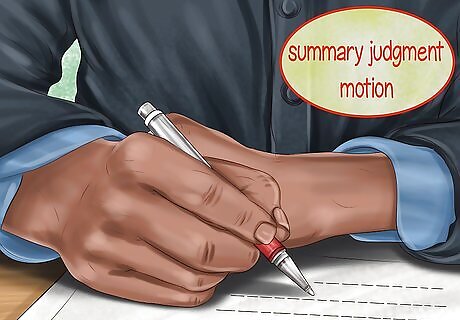
Draft your summary judgment motion. A summary judgment motion asks the judge to dismiss the lawsuit because it states no claim for which the law provides relief. Essentially, you are asking the judge to find that even if all the allegations listed in the plaintiff's complaint were true, they still would not add up to an injury for which you can be held liable under the law. Trials are for deciding facts – judges decide questions of law. When you ask for summary judgment, you are saying to the court that there are no issues of fact to be decided, only legal issues. Summary judgment motions typically are accompanied by extensive legal argument. Unless you have a strong understanding of the legal issues involved in the case and feel comfortable drafting your own motion, you should probably hire an attorney to draft this motion for you. You may be able to take advantage of unbundled legal services and pay a flat fee for an attorney to draft your summary judgment motion, or to draft the motion and file a limited appearance to argue that motion in court.

File your motion. For the judge to rule on your motion, you must file it in the same court where the plaintiff filed his or her lawsuit, then have a copy of the motion served on the plaintiff. The process for filing your motion is the same as the process you followed for filing your answer. You'll need to sign your motion and make copies of it before you take it to the clerk's office, so you have a copy for your records and a copy to send to the plaintiff. The plaintiff typically will file a written response to your motion. If so, that document will be served on you before the hearing. Read it carefully so you can successfully counter the plaintiff's arguments at the hearing.
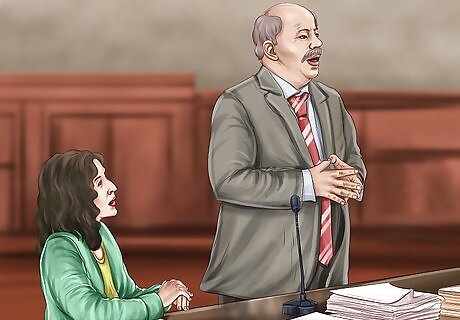
Argue your motion in court. The judge typically will hold a hearing for your summary judgment motion which follows usual court rules of procedure and evidence. If you hired an attorney to draft your motion, you may want him to argue the motion in court as well. Although you may have to pay more in legal fees, compare the amount the lawyer will charge to the amount the plaintiff is claiming you should pay for his or her injuries. Speak with your attorney about what the fees you paid for the motion include. #*Most courts do not allow live testimony at summary judgment hearings. Witnesses testify regarding issues of fact, and summary judgment motions assert that there is no genuine issue of material fact. Other than the lack of witnesses and evidence, a summary judgment hearing proceeds much like a trial. Since it's your motion, you will have the opportunity to argue first. After that, the plaintiff will present his or her opposition. Then the judge will make a decision.
Negotiating a Settlement
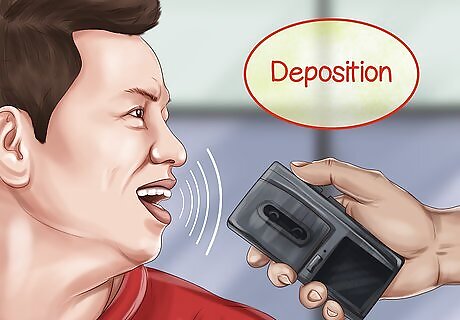
Gather more information about the incident. If the plaintiff's lawsuit has survived your summary judgment motion, you need more information to limit or negate your liability for his or her injuries. In civil litigation, parties share evidence and information through the discovery process. Through discovery, you can request documents and information from the plaintiff, as well as take depositions of the plaintiff and other witnesses. Depositions are live interviews conducted under oath in the presence of a court reporter. The court reporter produces a transcript of the proceedings for later use. If the plaintiff filed his or her case in small claims court, there may not be any provision for discovery – or if there is, it will be limited to a single exchange of written questions and requests for production of documents. Discovery can be a time-consuming and expensive process. If the case proceeds to the discovery stage of litigation, you may want to consider hiring an attorney to fully represent you – especially if the plaintiff has an one.
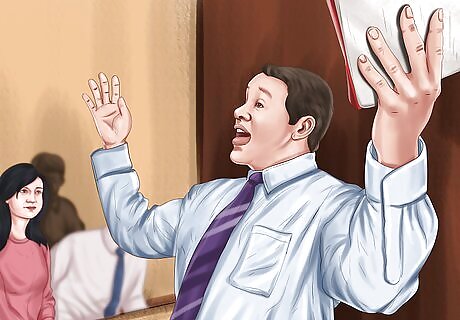
Propose mediation. A neutral, third party mediator may be able to facilitate a discussion between you and the plaintiff that leads to a resolution of the dispute. Mediation has the benefit of being confidential, allowing you to handle the issue privately and avoid the damage a public lawsuit could cause. Many courts require litigants to at least attempt mediation before a trial will be scheduled. Mediation helps ease the backlog in the courts and helps parties resolve their disputes more efficiently. If the court requires mediation, the mediator's services may be offered free of charge. However, in most cases there will be a fee for mediation, which typically is split by the parties. Mediation is a non-adversarial environment, in which the mediator works with you and the plaintiff to come to a mutually acceptable compromise regarding the situation. You can't necessarily hope to come out of the mediation not owing the plaintiff any money at all, but the amount you agree upon as a result may be substantially less than the plaintiff would be awarded in court – not to mention the time and expense of litigation that you would avoid.

Attend your mediation appointment. Arrive at your mediation appointment prepared with any documents or information that support your side of the story, as well as with an open mind and an interest in compromising to reach a mutually acceptable solution. The mediator typically will begin the appointment by presenting an opening statement and describing the procedure and goals of the mediation process. Then you and the plaintiff will each have the opportunity to present your own opening statements. Typically there will be some joint discussion before you and the plaintiff are separated. The mediator then will speak to each of you individually and may provide advice regarding his or her view of the situation and the type of agreement that may be possible. These private meetings may go for several rounds before the mediator calls both of you back into the same room to negotiate together. Typically this only occurs once the mediator believes you are close to a settlement, but just need to iron out a few minor details.

Get any agreement in writing. If you and the plaintiff are able to reach a settlement through mediation, make sure both parties sign a legally enforceable written agreement before you pay any money to the plaintiff. Often the mediator will write up the key aspects of the settlement for both of you to sign. Make sure you read over this document carefully. If there's anything you don't understand, or if you don't believe something accurately reflects the terms of the settlement, say so. Once the two of you agree on the written settlement document, you will both sign it. Depending on the court, the judge may want to approve the settlement. If you are unable to reach an agreement during mediation, the case will proceed to trial. At this point, unless the plaintiff has filed his or her lawsuit in small claims court, you may want to retain counsel to assist you with trial preparation and to represent you at trial.


















Comments
0 comment